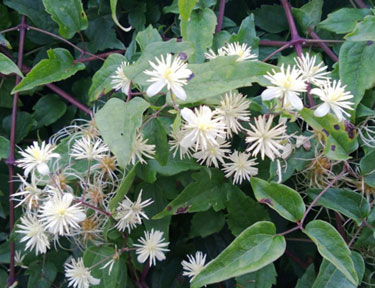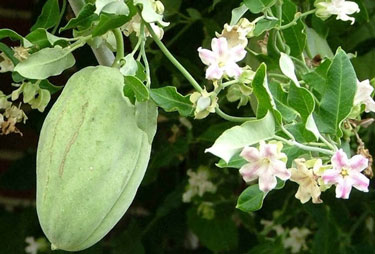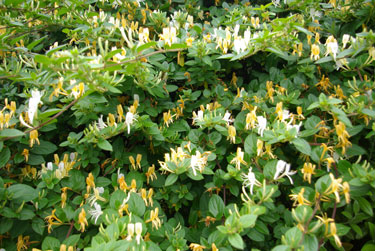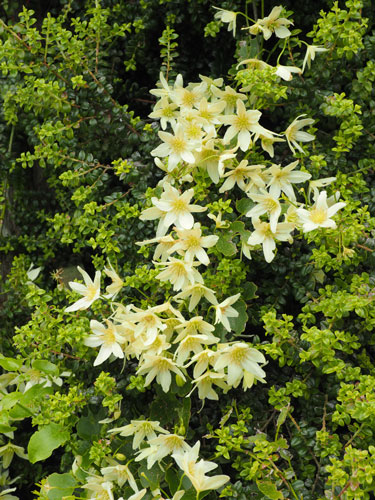Friend or foe?
A concerning number of vines that arrived here as garden plants, have become problems in the New Zealand wilderness. They range from the most notorious offenders, such as old man’s beard (Clematis vitalba), to those still revealing their weedy ways. Thankfully, the vast majority of our environmental weeds are banned from sale in garden centres.
A plant’s ability to become invasive varies between regions, but with climate change, weeds of warm climate origin are on the move from north to south and are going to get all the more invasive if we take our eyes off the ball.
Especially problematic around Auckland and Northland, moth plant (Araujia hortorum) is not only highly poisonous, but suffocates small trees, shrubs and seedlings, replacing native vegetation in almost any frost-free habitat. In southern regions the deciduous Chilean flame creeper (Tropaeolum speciosum) is one to watch out for when it flaunts its eye-catching scarlet flowers in summer.
Pink jasmine (Jasminum polyanthum) and Japanese honeysuckle (Lonicera japonica) are seductively perfumed but will quickly spread out of control and can cause serious harm to native bush, climbing high up into treetops. English ivy (Hedera helix) with its attractive dark green leaves is a tempting groundcover or container plant but is as invasive in the wild as it is in the garden, clambering 30 metres or more into treetops and attaching itself via aerial roots.
Common on shady scrubland floors, periwinkle (Vinca major) is an evergreen creeper with pretty blue flowers but forms a very dense mat that blocks the growth of native seedlings. Similarly, wandering willie (Tradescantia fluminensis) is spoiling bush reserves throughout the North Island and in some parts of the South Island. This shiny leafed devil forms thick creeping mats, blocking the growth of native seedlings. Bits of brittle stem get carried along in water to take root in fresh ground. It is extremely difficult to control once it takes hold.
Many other weedy vines, trees, shrubs and perennials once popular as garden plants remain rampant, dispersed far and wide by birds, animals, wind, water, and people dumping garden waste.
Slowing the spread relies heavily on volunteer groups throughout the country. Control measures combine labour-intensive digging with herbicides where necessary. Tough weeds call for tougher weedkillers like Yates Woody Weedkiller. Find out more at weedbusters.org.nz. Biological control methods are also increasingly important in New Zealand.
A recent report by the Parliamentary Commissioner for the Environment is calling for a more focused and coordinated effort from government agencies and local authorities, but the role of gardeners in the battle to preserve what’s left of our unique indigenous flora remains as important as ever.
Plant instead
Native climbers
Clematis paniculata and other native clematis
Metrosideros fulgens (rata)
Parsonia heterophylla (native jasmine)
Tecomanthe speciosa (akapukaea)
Native groundcovers for shady places
Arthropodium (NZ rock lily)
Blechnum penna-marina and other ferns
Elatostema rugosum (Parataniwha)
Fuchsia procumbens
How gardeners can help
- Check before planting, especially when sourcing seedlings and cuttings from wild areas or another garden.
- Never bring seeds or plant material into New Zealand from other countries.
- Dispose of garden waste correctly. Burn, compost, or find an approved landfill or transfer station for deep burial.
- Remove weeds before they flower and seed.
- Check your regional council website to learn which plant pests are of particular concern locally.
- Be on watch and report new weeds spreading out of control in your region.
- Join a local weedbusters group.
For further information:

1-Mar-2022

Clematis vitalba - old man's beard

Araujia hortorum - moth plant

Lonicera japonica - Japanese honeysuckle

Fuchsia procumbens - NZ native fuchsia

Clematis forsterii and climbing rata

